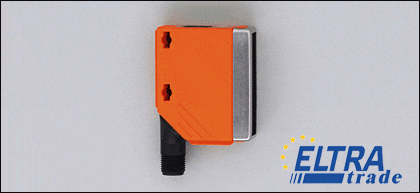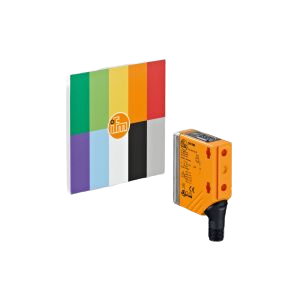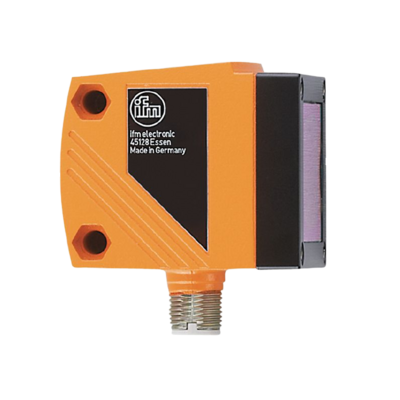IFM Position sensors
- Sensing range 0.5...40 mm non-flush mountable
- Operating voltage 10...30 DC V
- 3-wire
- PNP
- M12 Connector
- Rectangular, plastics
- DC PNP
- Polarisation filter
- Connector
- Sensing range 80...1200 mm
- Operating voltage 10...30 DC
- ("supply class 2" to cULus) V
- PNP
- M12 Connector
Dual sensor for actuator feedback, 2 inputs / 1 output, 2 inductive position sensors integrated, Version 2.1 with extended addressing mode, Connector, Sensing range 4 mm [nf]
Dual sensor for actuator feedback, 2 inputs / 2 outputs, 2 inductive position sensors integrated, Version 2.1 with extended addressing mode, Connector, Sensing range 4 mm [nf]
Dual sensor for actuator feedback, 2 inputs / 1 output, 2 inductive position sensors integrated, Version 2.1 with extended addressing mode, ATEX approval, Group II, category 3G, Connector, Sensing range 4 mm
ifm color sensor are a powerful tool for automating color recognition and control processes, which helps to improve product quality and production efficiency.
- Programming with buttons on the housing
- Status indication by means of LED
- Protection against overload
IO-Link distance sensors from ifm electronic are the ideal solution for a wide range of applications
- Ambient temperature: -40...80 °C
- Body material: plastic, metal
- Connection type: cable, connector
Through-beam sensor, Ø 1
Through-beam sensor, M4
Through-beam sensor, Ø 3
Through-beam sensor, M6
Through-beam sensor, Ø 6
Through-beam sensor, M6
Diffuse reflection sensor, Ø 1
cross section converter, 5 x 15 x 20
FE-00-A-A-R3/1,5M
Through-beam sensor, Ø 3
FE-00-M-V-M4/2,5M
FE-00-M-V-R3/3M
FT-00-M-V-R4/3m
FE-00-M-V-R3
Through-beam sensor, 5/16"x24
Through-beam sensor, 5/16"x24
Through-beam sensor, Ø 5
Through-beam sensor, Ø 5
Position sensors are devices for determining the linear or angular position of an object and converting it into a signal transmitted to the control unit via the field bus.
Depending on the design and principle of operation, position sensors have a different response range, and different accuracy, and are designed to detect objects from different materials.
Today we will talk about what IFM Efector position sensors exist and what they are for.
What are IFM Position Sensors Used For?
Position sensors are devices for determining the linear or angular position of an object and converting it into a signal transmitted to the control unit via the field bus.
Proximity sensors allow you to contactless determine the presence of a controlled object in their area of action. Depending on the principle of operation, sensors can work on different objects from different materials. For example, inductive sensors are triggered by metal objects, capacitive sensors are triggered by any, including non-metallic ones, and magnetic-inductive sensors are triggered only by magnetic materials, and, accordingly, can work through walls made of non-magnetic materials.
By function, most sensors are limit switches or position control sensors; they monitor the presence of an object and switch the switching output when triggered. Some sensors allow you to measure the distance to the object, that is, they are measuring sensors; their output is analog (the signal level is proportional to the distance). In measuring sensors, as a rule, there are also switching outputs, the operation of which can be configured according to the principle of "window" or "hysteresis" of the measured value.
The budget cost of IFM inductive sensors is due to the wide range of the IFM manufacturer and the unification of products.
Three Types of Position Sensors
There are three main types of IFM position sensors, which we will discuss in more detail below.
Capacitive sensors
Capacitive proximity sensors are widely used in industry and are used in almost all industries. Capacitive proximity sensors are relatively inexpensive but reliable.
Capacitive sensors are designed for non-contact detection of the presence of objects made of various materials, both metallic and non-metallic (for example, bulk materials, liquid, granular substances) at a distance of up to 25 mm. Sensors detect the proximity and presence of objects and can be used to monitor the fill level of volumes with liquid or bulk materials, as well as to control the internal content of closed packages. The sensors have a wide operating temperature range and a long sensing distance.
The capacitive sensors are electromagnetically resistant, IP 67/IP 68 rated for harsh environments, and have built-in protection against short circuits and reverse the polarity of the supply voltage.
The sensors are made in cylindrical (CM) and rectangular (CQ) housings and can be mounted either flush or elevated above the mounting plane.
Inductive sensors
Inductive position sensors are used to control the movement of metal objects, their position in space, and approaching the control point.
A typical application of inductive sensors in industrial automation is similar to limit switches (or limit switches).
The inductor in the sensor housing forms an alternating magnetic field on the front of the housing. When a metal object enters the zone of action of the field, the amplitude of the oscillations of the circuit changes, and the sensor is triggered, i.e. changing its output. Since inductive sensors work only on metal objects, they are insensitive to various kinds of interference: foreign objects, the operator's hands, and external pollution.
Ultrasonic sensors
Ultrasonic position and displacement sensors serve as signaling devices and transducers. The signaling device emits a discrete signal about the presence or absence of a controlled substance or object. The transducer sends an analog signal indicating the distance to the object.
The main features are:
- Ultrasonic sensors work with any material, making them an almost universal means of measuring distance. Therefore, ultrasonic meters are the ideal solution for determining the position and distance of an object in harsh environments with millimeter accuracy.
- Ultrasonic sensors, unlike photoelectric sensors, are not affected by environmental influences and allow measurements in dusty, smoky rooms, as well as in rooms with a high level of noise. Moreover, the sensors allow you to measure the distance to objects of any shape, color, and size, as well as made them of various materials. The sensor response range is very wide: from 100 mm to 6 m.
- Structurally, the sensors are an ultrasonic transmitter and receiver combined in one housing. The principle of distance measurement is associated with the measurement of the propagation velocity of a wave reflected from an object in the operating measurement range. Depending on the application, sensors are available with digital and analog outputs.
You cab buy full range of IFM sensors on our website. We can offer you the best price. Just contact our managers.

























